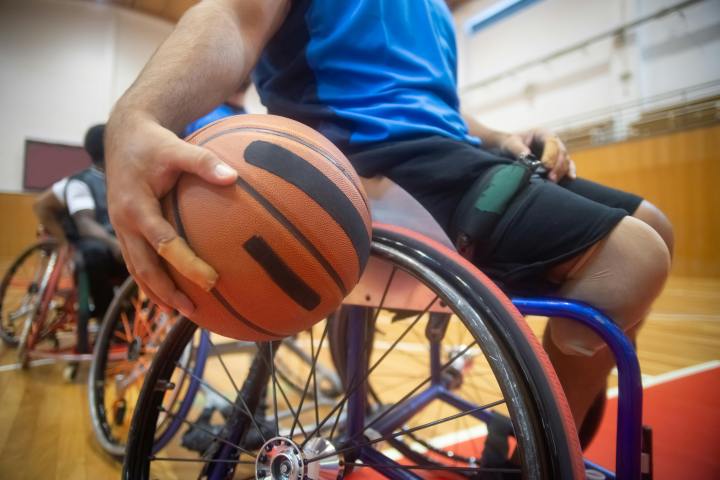In the realm of sports, the pursuit of excellence knows no bounds. Athletes strive to push beyond their limits, competing at the highest levels of human capability. Yet, for many years, barriers have existed that prevent certain individuals from fully participating in sports due to various factors, including physical disabilities, technological limitations, and economic disparities. However, thanks to advancements in sports engineering, we are witnessing a profound shift towards inclusivity, with technology playing a pivotal role in breaking down barriers and making sports more accessible to all.
Adaptive sports equipment
One of the most significant ways in which sports engineering promotes inclusivity is through the development of adaptive sports equipment. Adaptive sports are designed to accommodate individuals with disabilities, allowing them to participate in athletic activities that were previously inaccessible. From modified wheelchairs for basketball to specialised prosthetics for running, engineers are constantly innovating to create equipment that caters to the unique needs of athletes with disabilities.
Take, for example, the field of wheelchair rugby, also known as quad rugby or murderball. This high-octane sport, played by athletes with disabilities affecting their arms and legs, requires specialised wheelchairs that are both agile and robust. Sports engineers have risen to the challenge by designing custom-made wheelchairs with reinforced frames, enhanced maneuverability, and ergonomic seating to withstand the rigorous demands of the game. These innovations have not only revolutionised the sport but have also empowered athletes with disabilities to compete at the highest levels, showcasing their skills on a global stage.
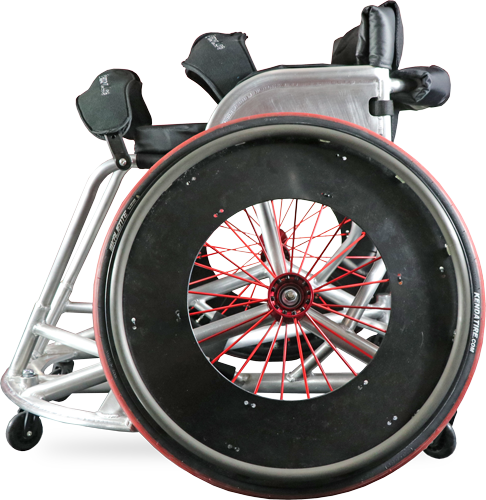
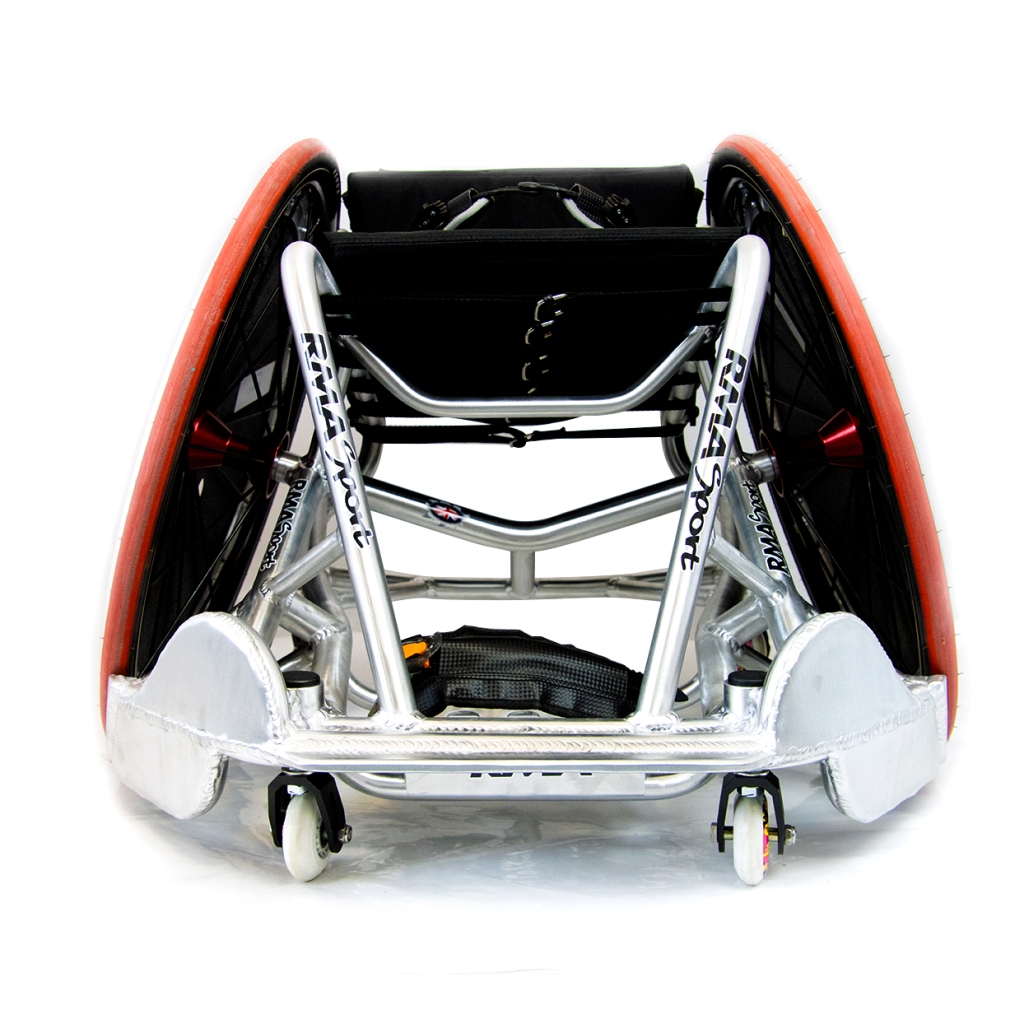
Commercially available rugby wheelchairs from (on the right) rgk wheelchairs© and (on the left) rma sport©.
Assistive technologies
In addition to adaptive equipment, sports engineering is also driving inclusivity through advancements in assistive technologies. These technologies aim to enhance the performance and experience of athletes with disabilities by leveraging cutting-edge innovations such as robotics, artificial intelligence, and sensor technology. For instance, in the sport of visually impaired skiing, athletes rely on audio cues and guidance systems to navigate the slopes safely. Engineers have developed wearable devices equipped with GPS tracking and vibration feedback, providing real-time assistance to skiers as they race down the mountain.
Coaching resources
Moreover, sports engineering is playing a crucial role in democratising access to sports training and coaching resources. Sports Engineers, including our Applied Computing Theme in SERG, adapt video and data capture systems, databases, image processing, sensor technologies, machine learning, data mining and mobile apps to ensure optimal coaching resources. Another example is virtual reality (VR) and augmented reality (AR) technologies, whereby athletes can now immerse themselves in simulated training environments, regardless of their physical location or economic status. VR training programs allow athletes to practice specific skills, analyse their performance, and receive personalised feedback from virtual coaches, leveling the playing field for aspiring athletes worldwide.
Design and development process
Furthermore, sports engineering is fostering inclusivity by promoting diversity and representation in the design and development process. By engaging with athletes from diverse backgrounds and lived experiences, engineers gain valuable insights into the unique challenges and needs of different user groups. This collaborative approach, as taken by the Design Engineering Theme of SERG, not only leads to more inclusive designs but also ensures that the voices of underrepresented communities are heard and valued in the innovation process.
Moreover, up-to-date and more inclusive anthropometrics, which refer to the measurement of the human body, have the potential to significantly enhance inclusivity in sports. By expanding the scope of anthropometric data collection to encompass a broader diversity of body types, including individuals with disabilities and those from underrepresented communities, sports engineers can design equipment and facilities that cater to a wider range of athletes. This can be facilitated through the use of 3D body surface imaging devices and expertise – like that of our Morphology Research Theme in SERG. This approach ensures that all sports equipment, can be optimised for maximum comfort, safety, and performance across diverse body shapes and sizes – at an individual and population level.
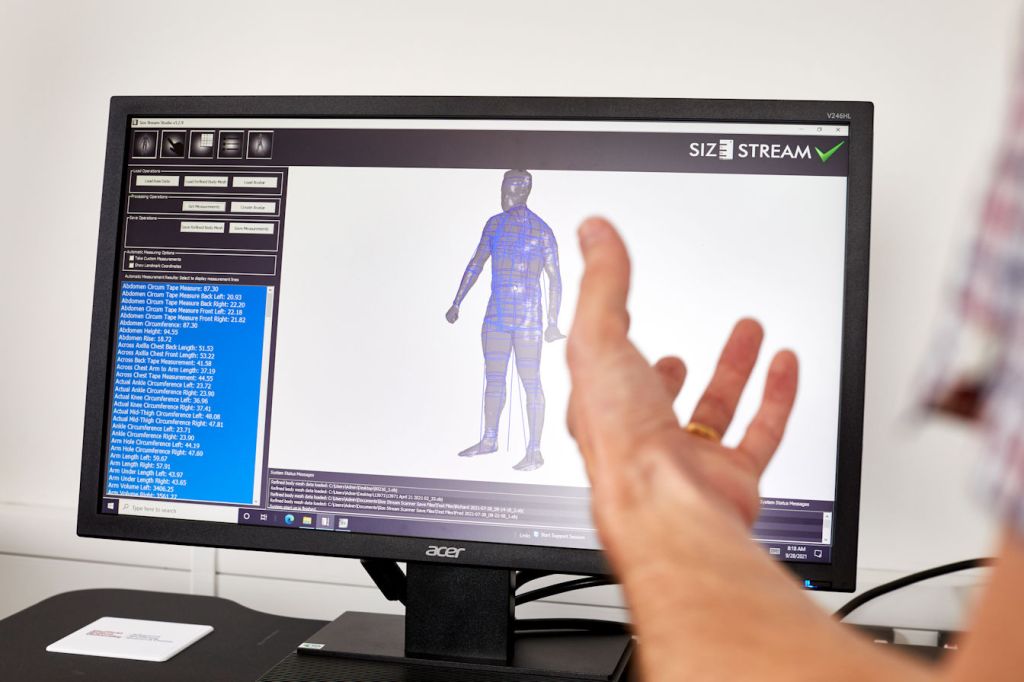
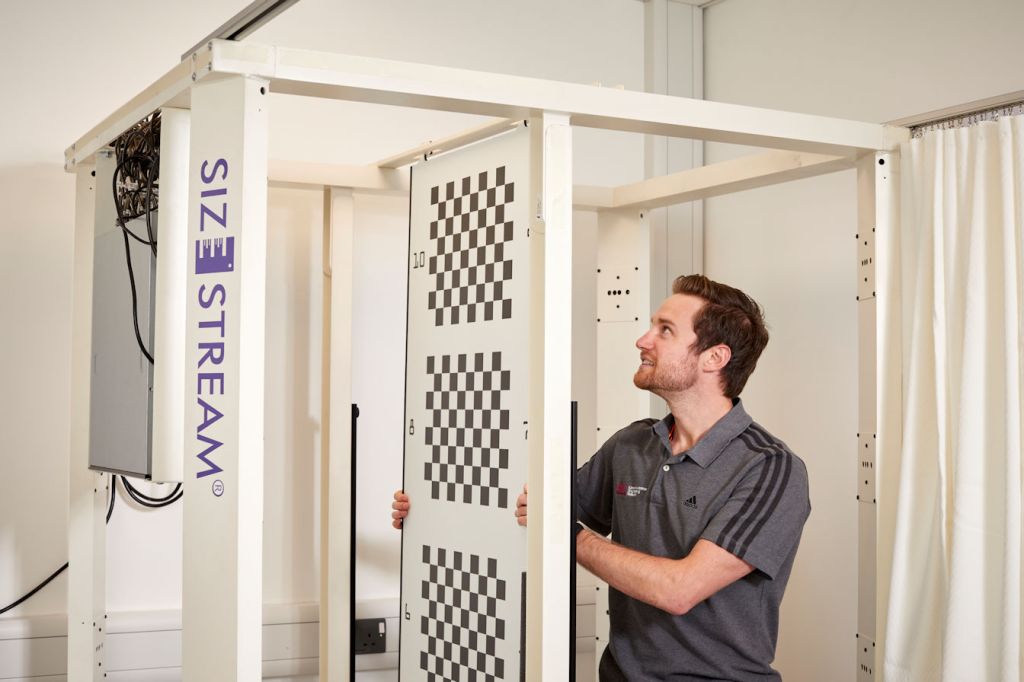
One of the 3D body surface imaging system (SizeStream) within the Morphology Research Theme of SERG at the AWRC.
Commercially available engineering innovations
Whilst the majority of our work is for bespoke systems / project – or those that are embargoed, the are a plethora of commercially available technology engineering innovations working to make sports more inclusive. Here are just ten that have caught our eye:
- Ottobock C-Brace: The Ottobock C-Brace is a microprocessor-controlled orthotronic mobility system that provides advanced support and stability for people with mobility impairments.
- ExoSym Device: The ExoSym (Exoskeleton Symphony) device is a custom-made orthosis designed to improve mobility and function for individuals with lower limb disabilities, particularly veterans and athletes.
- Invacare Top End Racing Wheelchair: The Invacare Top End Racing Wheelchair is specifically designed for elite athletes participating in wheelchair racing competitions.
- Rowheels REV-LX: Rowheels REV-LX is a revolutionary wheelchair propulsion system that utilises a pulling motion rather than the traditional pushing motion.
- Freedom Trax: Freedom Trax is an all-terrain wheelchair attachment that enables users to traverse challenging outdoor environments such as sand, snow, and mud.
- E-Fix Add-On Power Assist for Manual Wheelchairs: The E-Fix add-on power assist system by Alber is designed to transform manual wheelchairs into electric-powered mobility devices.
- Cheetah Flex-Foot Prosthetic Blade: The Cheetah Flex-Foot prosthetic blade, developed by Össur, is a high-performance running blade designed for elite athletes with lower limb amputations.
- ReWalk Exoskeleton: The ReWalk Exoskeleton is a wearable robotic exoskeleton designed to assist individuals with spinal cord injuries in walking.
- Hippolib: An adaptable V-TRAK backrest to ensure optimum positioning and support for the rider during equestrian activities.
- Tech2play AmiGo: A small robot that can be attached to the front of a wheelchair, either to a manual or an electric wheelchair to assist sports and exercise engagement.
Despite the significant strides made in promoting inclusivity through sports engineering, challenges remain on the path towards full accessibility and equity. Economic barriers, lack of infrastructure, and social stigmas continue to pose obstacles for many individuals, particularly those from marginalised communities. However, by continuing to harness the power of technology and innovation, we can overcome these challenges and create a future where sports truly belong to everyone.
In conclusion, sports engineering is driving a paradigm shift towards inclusivity in sports, making athletic pursuits more accessible and equitable for individuals of all abilities. Through adaptive equipment, assistive technologies, virtual training resources, and inclusive design practices, engineers are breaking down barriers and empowering athletes to realise their full potential. As we look towards the future, let us continue to champion the principles of equality and diversity, ensuring that sports remain a universal platform for inspiration, achievement, and unity.
To learn more about the work we do in SERG check out our website, our annual review or our MSc Sports Engineering course. If you have any questions or queries about how to make technology or equipment more inclusive please get in contact.
If this topic is of interest to you also check out the 2023 IMECHE Sustainable inclusive innovative: the role-of engineering in sport report.
